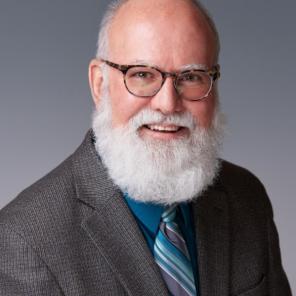
David Drake is a professor of microbiology and infectious diseases in the Iowa Institute for Oral Health Research in the UI College of Dentistry, Iowa City. He has served on many NIH Study Sections and was recently a permanent member of the ODCS Study Section. Drake has had significant NIH funding for the last 10 years and has authored over 100 publications, including being a co-PI of a new 5-year RO1 that was recently funded. He has been trained and has considerable expertise in independent professional development, training and mentoring of post-doc and junior faculty members. As part of the National Center for Faculty Development and Diversity team, he is committed to helping young researchers develop their research ideas into productive and successful independent careers, and to enhance the diversity of the NIH-funded research workforce. He recently mentored four Postdoctoral Fellows at the UI through the auspices of this program and continues to serve as a national mentor. Drake served on the AADR Board and was involved in the planning of the IADR Academy Faculty Development Workshop at the IADR/AADR meeting in March 2020. He also co-led a grant-writing course in the College of Dentistry that involves Ph.D. students and Post-doctoral Fellows.
1. How did you first learn about AADR and what motivated you to join? What do you find to be the most valuable benefit of an AADR membership?
I first learned about AADR while completing a Post-doctoral Fellowship. I came from a classical infectious disease Doctoral program, and my advisor suggested I expand my horizons. I found a program in oral microbiology, and it changed the direction of my career forever.
I believe the most valuable benefit of an AADR membership is the ability to go to the Annual Meetings and interact with colleagues and discuss the science you are passionate about. It is magical to connect with others and get inspired by the quality research being shared.
2. What is the best way for other members to become more involved in AADR?
In my experience, I recommend becoming more involved by contacting a senior person at your institution who is also a member of AADR. Ask them about committees and opportunities, and find out how their involvement specifically helped them advance their careers. Additionally, when you attend meetings, seek out officers and Board Members to discuss their interests, their involvement and leadership with AADR, and how they would ideally like to see members engaging with the Association. The AADR website is also a great resource and has information on how to get involved.
3. You served as the AADR Treasurer from 2016-19. What motivated you to run for office? How has this leadership experience within AADR shaped your career?
I was contacted by senior colleges and encouraged to run for office, and I decided to run because I had received so much from the AADR that I decided I wanted to give back. Plus, I wanted to help my colleagues. I thought I could make a difference. I was elected, and it was an incredible experience — one of the best experiences of my career. It was so enlightening to see AADR from a completely different perspective. My involvement shaped my career, fueled my passion and made me want to become even more involved going forward.
4. You were named a 2019 AADR Fellow. What does this mean to you?
I was incredibly honored to receive the title of AADR Fellow. I am the only person at the University of Iowa to ever be named an AADR Fellow, and I am humbled. I’ve known a lot of AADR Fellows, and it is an incredible honor to be listed among such senior colleagues from around the country.
5. What do you want to see in the future for AADR?
One of the ideas I felt passionately about while serving on the AADR Board of Directors was reaching out to colleges with medical departments or schools, particularity to those involved in craniofacial genetics, to introduce students to our association and help them understand what we do for the profession. By educating them about organizations that will help advance their professional careers after graduation, we could deepen and expand our membership.
There are also a cadre of craniofacial researchers who are not part of our dentistry community but who would greatly benefit from a membership and involvement in AADR. I’d like to see us offer more programing at our Annual Meetings that would attract this group and enhance their motivation to join, such as studies on human genetics and craniofacial abnormalities, bone remodeling and 3D printing, or micro-RNA.




